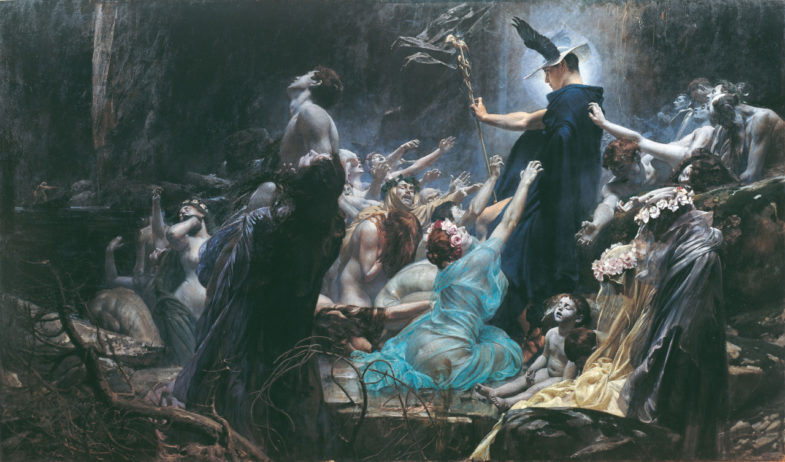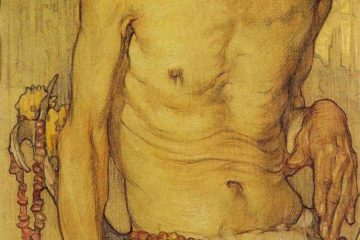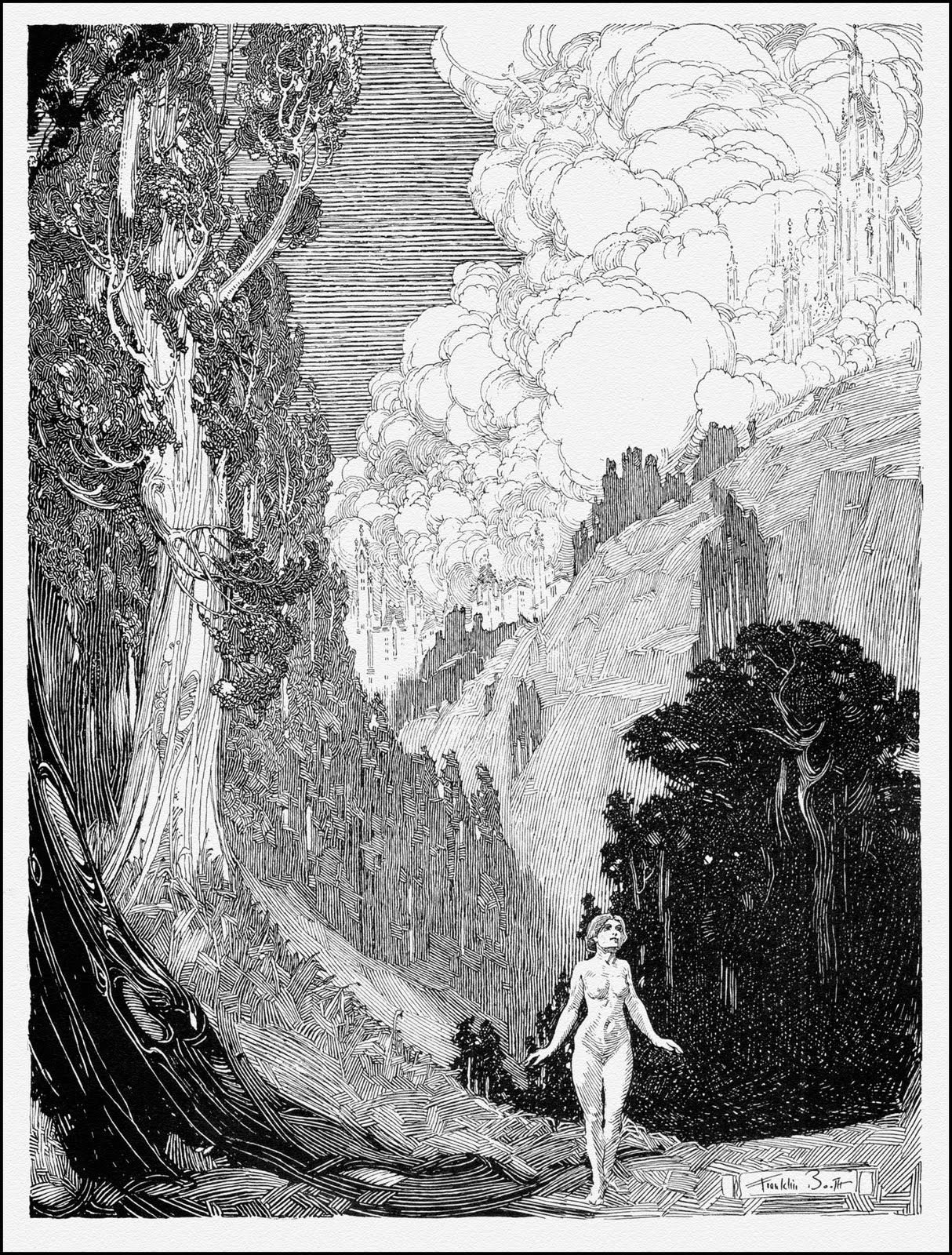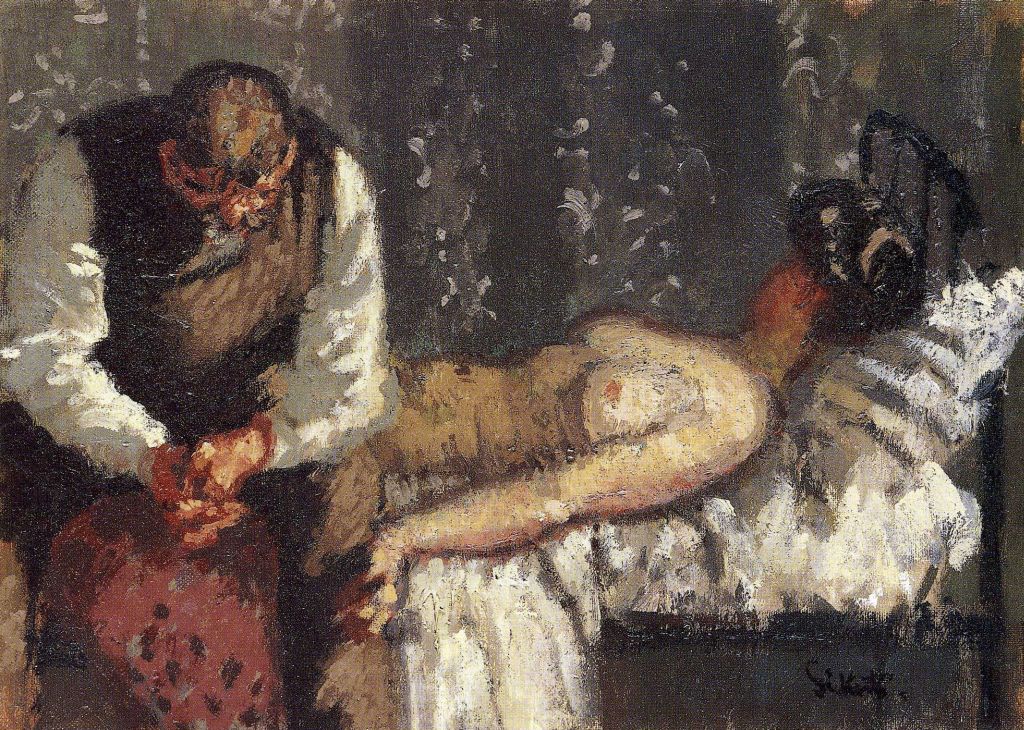Welcome to the first of what I hope are billions of words about art, and mostly what I think about certain pieces.
Before I get started, let me just preface the whole works with the idea that the wee image here probably isn’t going to do much justice to the work. So, on all of the pieces I’ll be talking about, I’ll be including a link to a larger version of it somewhere online. While it’s nothing like seeing a piece of art in person, at least a larger piece can help you see SOMETHING that I’m talking about.
For the first of my resurgent articles, I wanted to talk about one of my favorite pieces, and Adolf Hirémy-Hirschl’s Souls on the Banks of the Acheron certainly fits the bill. It pops up as my desktop background every so often, and I find I just wander around the image, finding something new every time. There’s the fear and doubt on the faces of so many of the souls. There’s the look of resigned fate on the face of the child near the bottom. There’s also Charon in the far distance, a detail that, despite looking at this painting for years, I didn’t pick up on until I read James Gurney’s post about this piece (here).
As a short tangent, you are following Gurney Journey, right? Everyone should, get on it. I’ll wait…
The most striking part of Acheron is Hermes, in all his glory. Hirémy-Hirschl used such great composition and color contrast to pop Hermes right out of the scene. But as much as the light around Hermes’ head indicates his status, it is actually in Hirémy-Hirschl’s characterization of Hermes that marks him as a god. His skin tones are clearly alive, contrasted with the harsh grays of the dead around him. He is posed with a palpable strength above all others, and even with his obvious physical strength it is the pose that truly marks him as the god he is.
See previous editions and subscribe to new articles here.
Hirémy-Hirschl used not only Hermes’ pose and a central light to make him the centerpiece, the way that the dead are layered around Hermes leads the eye back to the god. The outstretched arms point towards him, his staff and the breeze blowing around its top make lines towards him, and Hirémy-Hirschl even uses the color of the carried woman in the forefront and her clothes to point back to Hermes.
For me, along with the pure strength of Hermes on display, what gets me the most about this painting are the emotions of the dead all around him. There are so many different kinds of emotion, I think everyone looking at the piece will find their own person to follow. The resigned man carrying his dead love, turning away from Hermes in despair. There are those who are still trying to live, those ready to follow their fate, and those hoping that Hermes will help them.
But it is in this idea, of Hermes helping them, that I find the counter to the emotions of the dead. Hermes is here to lead the way to the boatman, coming up in the distance. He doesn’t seem dispassionate as much as he seems determined to do his work and move on. He keeps his eyes focused in front, his strength apparent, and his position as the guide to these lost souls clear. He’s here to guide them, not release them, and he projects the strength to do the work.
In many ways, the painting is about exactly that: do what it takes to get the job done.
See the MUCH larger version here at WikiArt.



